Communication is one of the crucial factors that can either make or break a project. Don’t believe us, let us take a look at the following statistics and figures:
- 86% of employees and executives cite lack of collaboration or ineffective communication for workplace failures
- About 75% of employers rate teamwork and collaboration as very important
- Less than half of survey respondents said that their organizations discuss issues truthfully and effectively
Working in a team requires much more than hard work, team spirit, and readiness to work alongside a bunch of people. The most important yet most ignored thing that is responsible for a team’s success is effective communication.
Communication is a vital part of any business environment because it facilitates the flow of information.
Whether it’s the details about the sales leads generated by your marketing team, or you need to get innovative ideas from your team members to solve a particular issue, the common thing you need is to communicate.
Well, communication is more like an activity that involves the exchange of information, but how that information flow is going to happen is decided by the communication strategies that you use.
Today, I have compiled some of the most effective communication strategies that you and your team need to coordinate productively.
But let’s not rush straight to the communication strategies and know a little more about communication.
Bring remote team members and clients together at one place. Try ProofHub!
Table of Contents
- What is the main role of communication?
- What are the four methods of communication?
- How important is communication?
- 9 Best Strategies for Effective Communication
- 1. Encourage One-to-One Communication
- 2. Let Everyone Speak in Meetings
- 3. Make Use of Multiple Modes of Communication
- 4. Bring in Some Humour: Why So Serious?
- 5. Prepare Yourself Beforehand
- 6. Promote Feedback During Communication Sessions
- 7. Be Ready to Involve Yourself in Difficult Conversations
- 8. Jot Down All the Key Points of a Discussion
- 9. Make use of Communication Tools
- Most Common Communication Mistakes That You Must Avoid
What is the main role of communication?
Communication is all about the exchange of information between two or more people. In any organization, employees need to communicate with one another to achieve desired outcomes.
When it comes to team communication, the purpose of interaction among the members is to share information that is essential for achieving organizational goals. Moreover, good communication makes it easy for team members to coordinate with one another effectively.
What are the four methods of communication?
Generally, there are several methods of communication that individuals can use to exchange information with one another. However, the 4 most common methods of communication used in organizations are as follows:
Verbal Communication

Verbal communication is the most common method of communication used by teams within organizations. It is a communication method in which the information is exchanged verbally. The individual behaving as the source transmits the information by speaking words or making patterns of sound, whereas the person at the receiving end needs to listen to the words or sound to get the information.
There are several factors that decide the effectiveness of verbal communication, such as clarity of speech, tone, word selection, speech rate, etc. Additionally, listening skills also matter a lot in deciding the overall success of verbal communication.
Written Communication
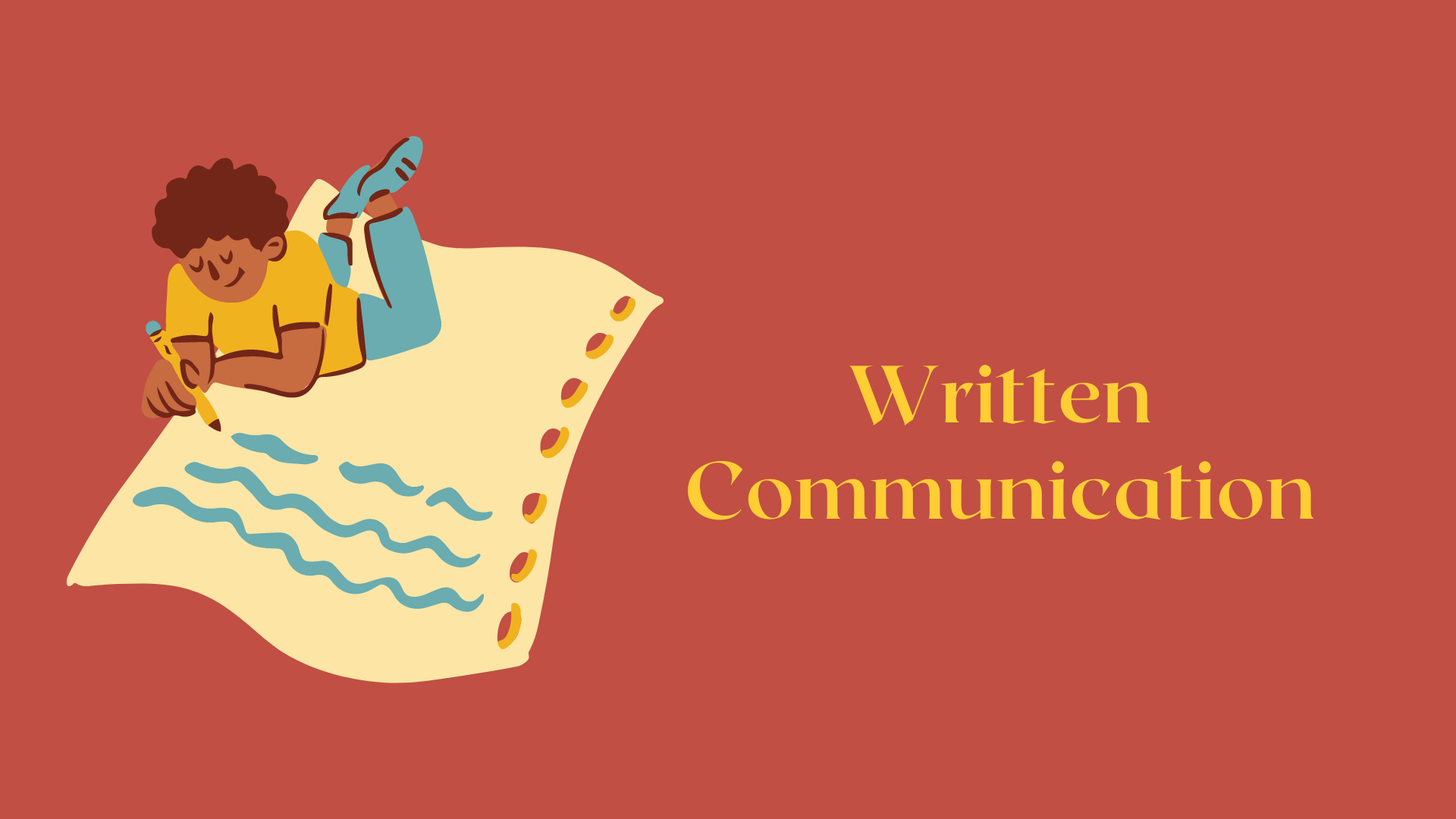
Written communication is another communication method teams use to disseminate information in the form of words or symbols written usually on paper or similar materials. The individual who wants to communicate the message or information needs to write on a paper and the individual at the receiving end has to read the information in order to understand it. The best thing about written communication is that it provides a record of information that one can access and go through multiple times.
Words are of paramount importance when opting for written information. Unlike verbal communication, the person at the receiving end cannot perceive the emotions of the individual drafting the message. Thus, the tone of writing and selection of words is crucial to ensure the reader gets the right information.
Non-Verbal Communication
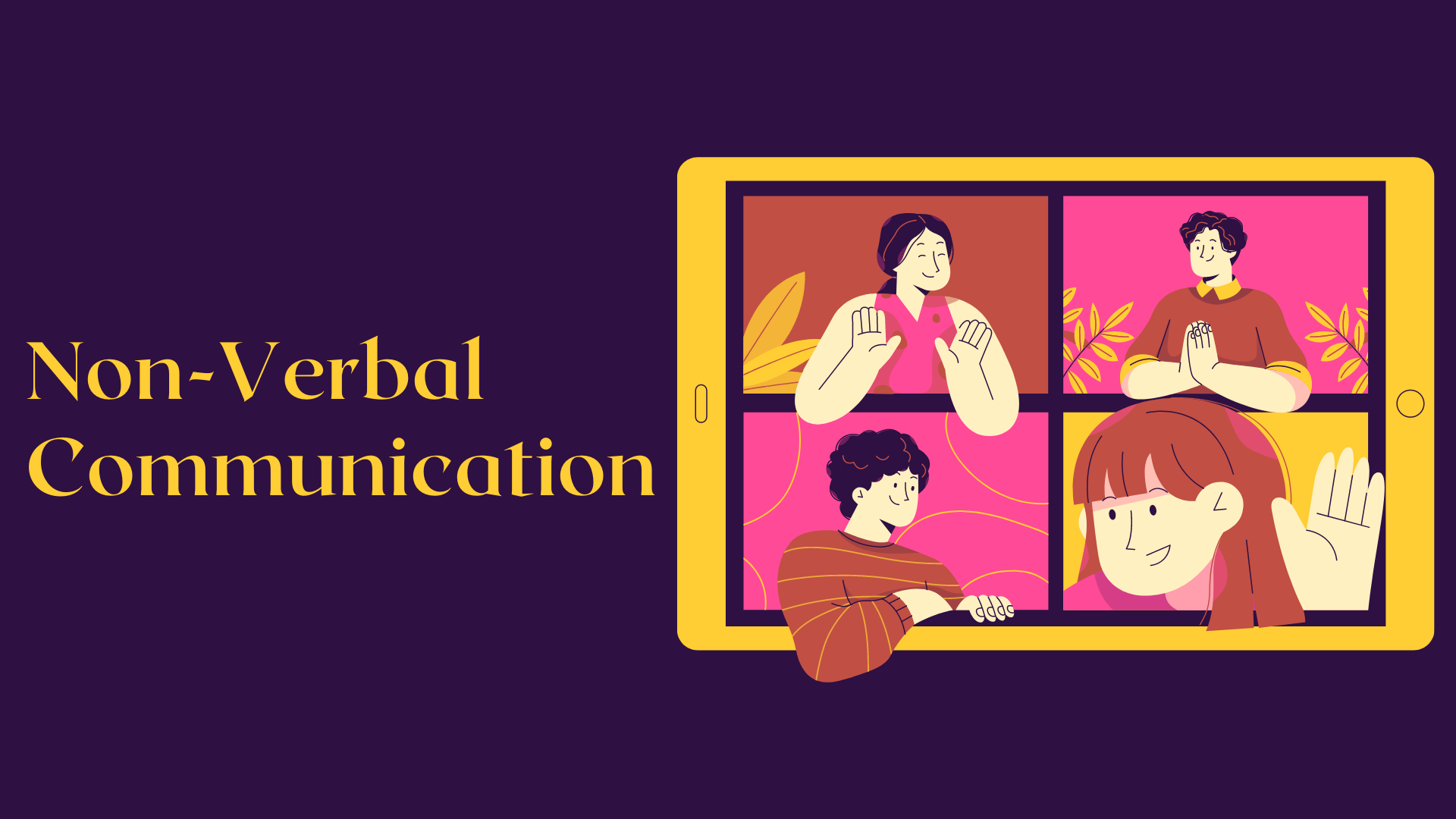
During non-verbal communication, information is transmitted using gestures, postures, and facial expressions. An individual can convey information using visual cues like body language, eye contact, etc.
One important thing to notice about non-verbal communication is that it can also happen unintentionally. For instance, not looking at the person who is sharing an idea with you most likely means that you are either not interested or disagree with the idea.
Visual Communication
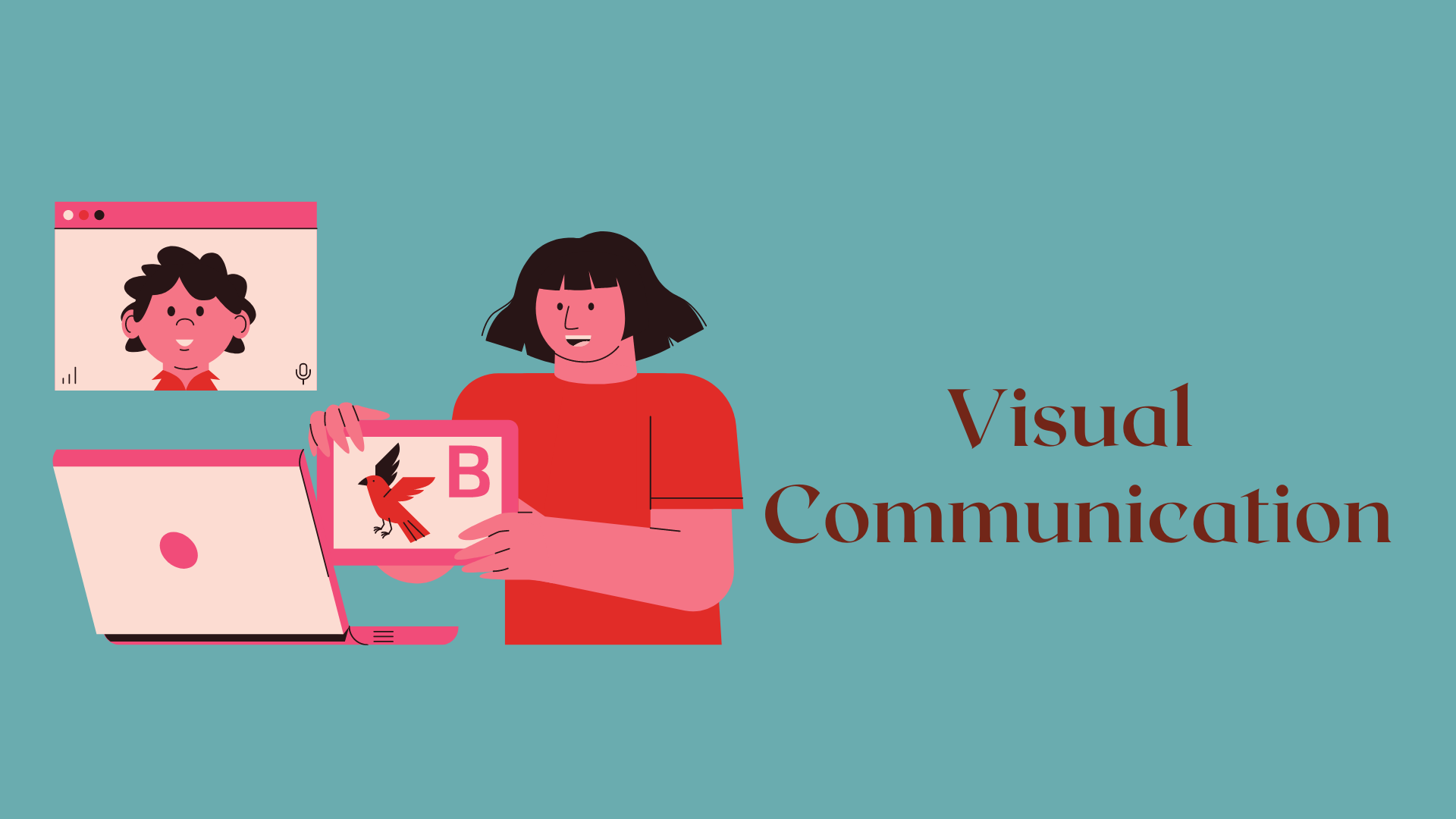
Visual communication makes use of signs, drawings, illustrations, graphics, pictures, etc. to transmit information and messages. The choice of the right visual elements can make it easier for individuals to interpret the information.
Both verbal and written communication can make use of visual elements to make the information more understandable. The most common instance where visual communication is used alongside verbal and written communication is during team meetings.
How important is communication?
At the workplace, teams are in a constant state of communication via email, video conferences, phone calls, texts, and face-to-face meetings. If project goals and objectives are clearly communicated, you can increase your chances of achieving those goals.
With the increasing number of failed projects, the need for implementing effective communication strategies is increasing day by day. Before we go ahead and discuss various methods to implement a communication strategy, let’s first understand what it takes to develop a kickass communication strategy.
Let’s go:
A communication strategy can be both short and focused or long and detailed depending upon the outcome you’d like to achieve. Whatever the case, you need to define the following things first:
1. Understand your needs and requirements
Before team members start working, make them understand why the strategy exists in the first place. A communication strategy should be made so that it serves a business or an organizational goal. Figure out the problem, seek solutions, and define roles accordingly.
2. Involve people
While the formulation of a strategy is taking place, involving others is a great idea. Bringing in other team members means getting more input which increases the chances of an effective communication strategy being made.
3. Know your audience
Knowledge of the target audience is a must to successfully execute your strategy. Figure out your audience – local, national, or global. Understand their needs and requirements by putting yourself in their shoes.
4. Define clear objectives
Whether it’s a marketing campaign or an organizational goal, well-defined communication objectives will take your strategy to another level. Clear objectives lead to increased focus and clarity which results in quality communication.
5. Evaluate
Evaluate as you go to check what’s working and what’s not. Even if you’ve been successful with your strategy, keep checking, improving, and refining it. This evaluation will help you to figure out whether tactics should be changed or not, resources should be added or not, and new plans should be implemented or not.
Want all your team members to be on the same page? Start using ProofHub today!
9 Best Strategies for Effective Communication

In any team, members need to interact and communicate with one another from time to time. Good communication not only strengthens the bond among the team members but also facilitates the overall process of information-sharing. Additionally, as communication is a vital part of our life outside work, it’s better to level up your communication skills and make it one of your key strengths.
Here’s a popular quote by John Powell that will motivate you to put effort for improving your communication skills:
“Communication works for those who work at it.”
Now, let us take a look at the most effective communication strategies that you and your teammates should follow to make team interaction both fun and rewarding:
1. Encourage One-to-One Communication
One-to-one communication is important to develop a bond and understand your teammates in a better way. When you talk to others on a personal level, you get to know more about them. You can read their body language, know about the communication methods that they are most comfortable with, know about the visual cues that they use more, etc.
Additionally, when you need to share some confidential information with someone, you need to communicate one-on-one with someone who you trust. You can easily talk about matters in private, and get suggestions from a single person without involving other people on your team.
2. Let Everyone Speak in Meetings
Yes, I also agree that team meetings are boring and seem more like a formality. But this usually happens when a limited number of participants have the privilege of sharing what’s on their minds. Meetings with defined agendas and the involvement of only those who are directly related to the issues being discussed are not productive for everyone.
It doesn’t matter whether you are a team leader or a team member, you need to express your thoughts openly during a meeting. It‘s the responsibility of the manager or the meeting organizer to ensure that every participant gets an equal chance to express what’s on their mind. Moreover, participants need to listen carefully to what others have to say without interrupting them. This will not only make the meeting more open but also gives a fair chance to everyone to hone their speaking and listening skills.
3. Make Use of Multiple Modes of Communication
Some people prefer talking face-to-face while others find it more effective to send text messages to convey information. You may want to stick with your favorite communication channels but this isn’t going to make communication with others easy for you in the long run.
Just like you, everyone has their own set of preferred modes of communication. However, to convey your messages to everyone on your team without any friction, you need to make yourself comfortable with different modes of communication. You can get yourself one step closer to becoming a communication expert by making use of different channels for communicating with your team.
4. Bring in Some Humour: Why So Serious?
Too serious conversations can put you and other participants in a negative state of mind. And this will affect how you perceive information and draw conclusions. Moreover, when a communication session becomes too serious, everyone wants to leave it at the earliest and the flow of information gets hindered significantly.
Sometimes, you need to put across information that is intense and it is not possible to avoid a stressful communication session. In such a case, you should know how to lighten the mood of yourself as well as others. A good joke can do the trick and help everyone to relax and retain their interest in the matter being discussed.
5. Prepare Yourself Beforehand
Don’t take things too lightly and always ready yourself beforehand when you have to share some important information with your teammates. You definitely don’t want any piece of information from getting skipped while communicating the message with your team.
It’s always a good idea to note down all the important points that you want to communicate with your team. Also, you need to focus on presenting information in an interesting and engaging manner. It’s a good practice to customize the information that you want to share with a particular audience.

6. Promote Feedback During Communication Sessions
Communication is a two-way process and information cannot be exchanged effectively if the flow of information is unidirectional. From unidirectional what I mean here is that the information is only flowing in a single direction. For instance, you shared some information with your team and no one asked or discussed the information with you.
Feedback plays a vital role in improving the overall effectiveness of communication by enabling the flow of information in the backward direction also. The most common example of feedback is the questions that you ask at the end of a presentation. Feedback can be in the form of doubts, suggestions, or thoughts that you will get after you communicate your message.
7. Be Ready to Involve Yourself in Difficult Conversations
Sometimes, you may find yourself in a conversation with someone whose thoughts, opinions, and feelings are completely different than yours. The two most obvious choices that you have in such a circumstance are to either avoid the conversation or get yourself involved in an argument.
But neither of the ways is going to do the trick, which is to make the communication happen effectively while keeping personal differences aside. So, what you need to do for tackling a difficult conversation is to stay relaxed and try to understand what the other person wants to say before responding. Also, you can practice how you respond when you get into tricky conversations that can happen with your manager or your team members.
8. Jot Down All the Key Points of a Discussion
While communicating with your team, especially during a discussion or a meeting, you witness the flow of a significant amount of information and ideas. However, it’s difficult to retain all the useful information that is shared verbally with one another. As a result, it is likely to lose most parts of the conversation that may come in handy.
To ensure that discussion brings productive results and information does not get lost, you need to note down every piece of information that seems valuable. This way, you can secure many ideas that otherwise would have been lost.
9. Make use of Communication Tools
Today, several tools have emerged that make it easy for the team to communicate and share their thoughts and ideas conveniently. You can use online team collaboration tools for instant messaging, video conferencing, brainstorming, note-taking, etc.
You can also use project management software like ProofHub, which comes with an integrated chat tool and various other team collaboration features. You will be able to stay connected with your team and at the same time, manage all your projects using a single application. By using advanced communication or collaboration tools, it will be both easy and effective to communicate with your team.
For better team communication and collaboration, you need a smart team collaboration tool. Try ProofHub for Free!
Most Common Communication Mistakes That You Must Avoid
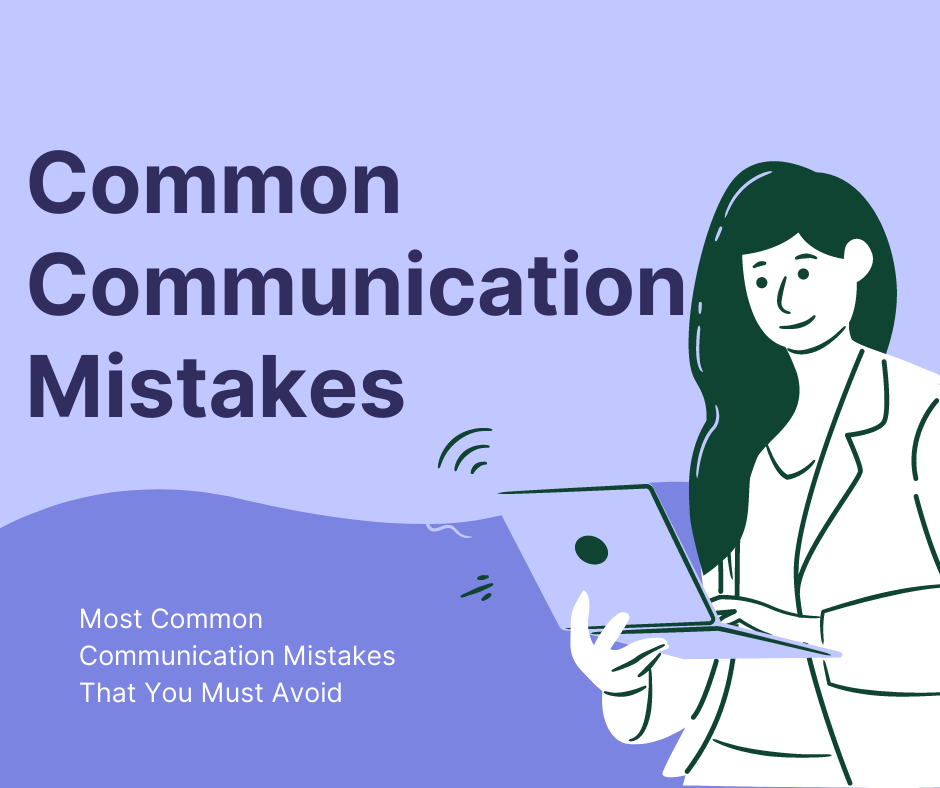
Before you start implementing the communication strategies that I’ve discussed, just make sure that you are not making any common communication mistakes.
Here are some of the most common communication blunders that can lead to ineffective conversations:
1. Assuming Everyone Understand Things the Same Way
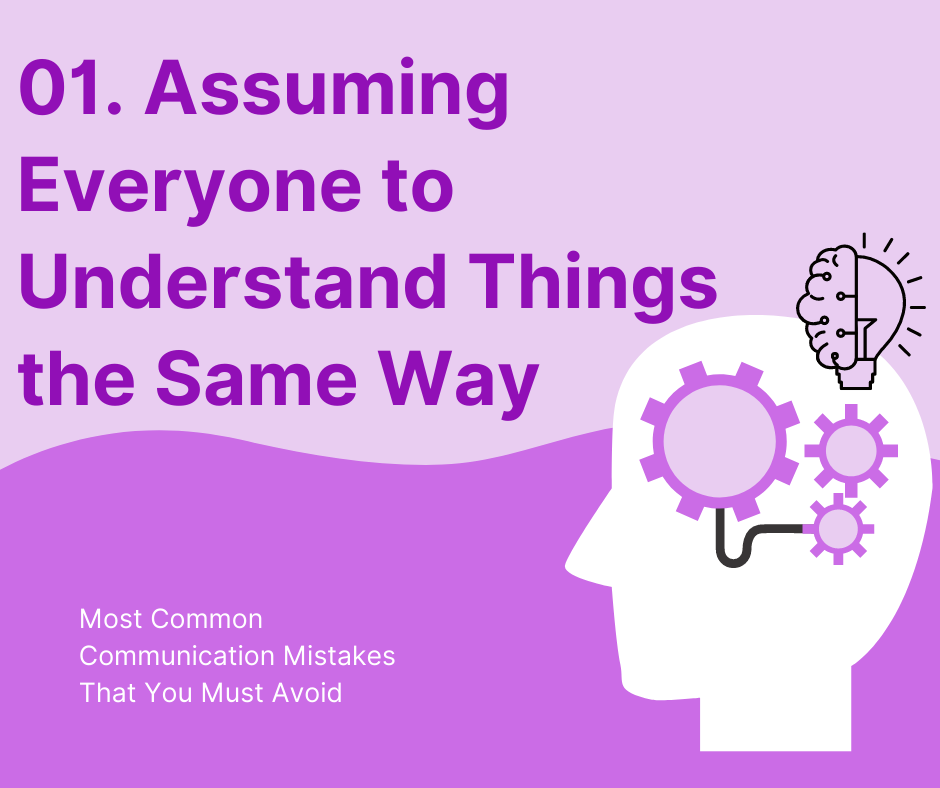
When you communicate with several people at a time, it is normal that some of them will get it easily while others are unable to understand your point. It happens because of the difference in the understanding level and preferred learning style. Moreover, you can never assume that all the people interpret your message in a similar way. Thus, it’s better to observe and develop a communication strategy that can work for all the members of the group whom you want to address. The one-size-fits-all approach never works when it comes to team communication.
2. Bad at Listening
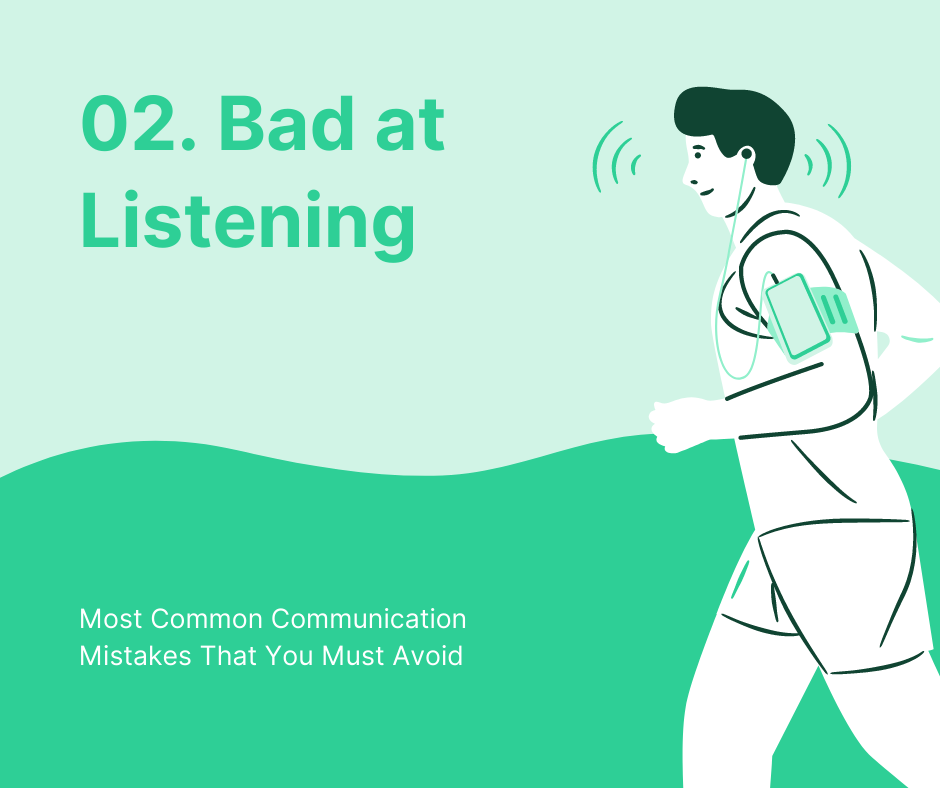
Communication is not only about speaking and transmitting information but is also about listening and receiving information. In any conversation, one person shares the information by speaking while the other person listens and interprets the information. So, what you need to understand here is that listening skills matter as much as speaking skills. By listening carefully to others, you will be able to understand things easily and learning becomes easier for you. Individuals who are bad at listening, are less likely to extract the correct information from the conversations.
3. Ignoring the Tone of Your Voice
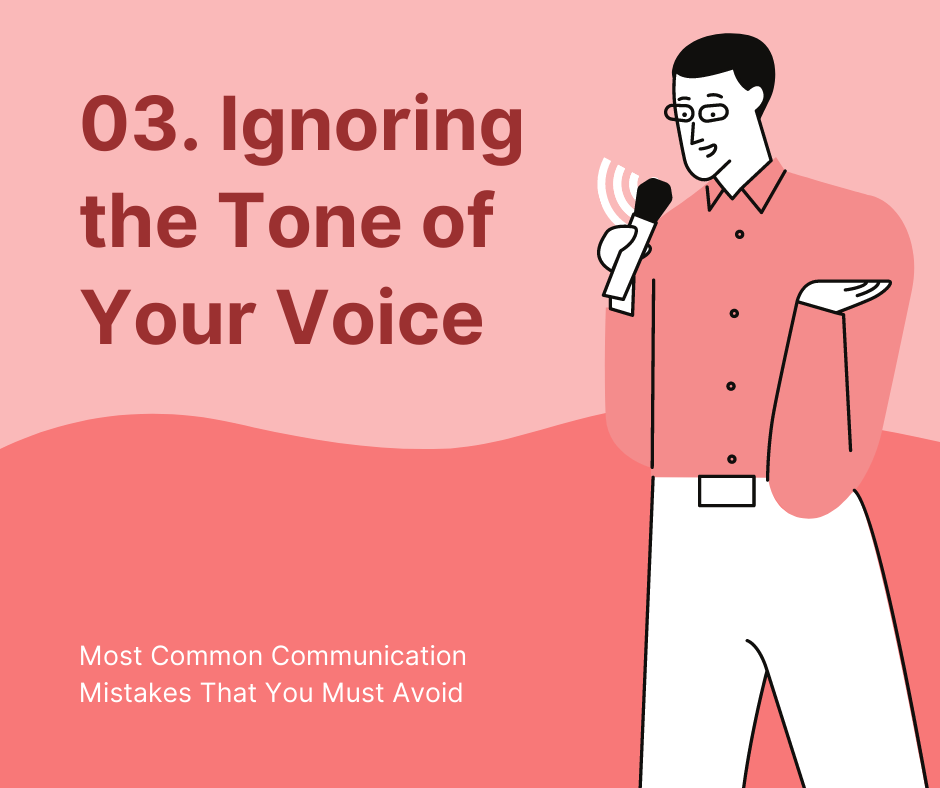
When you are communicating verbally, the tone of your voice matters a lot. Voice creates a major impact on your listeners and also acts as a key factor that decides how well your listeners get connected with you. Communicating in a harsh and annoying tone is likely to put a negative impact on your listener and in worst-case scenarios, results in conflicts. You need to make sure that the tone of your voice is gentle, confident, educating, and should imply that you are also willing to listen.
4. Emotions Overpowering Logic
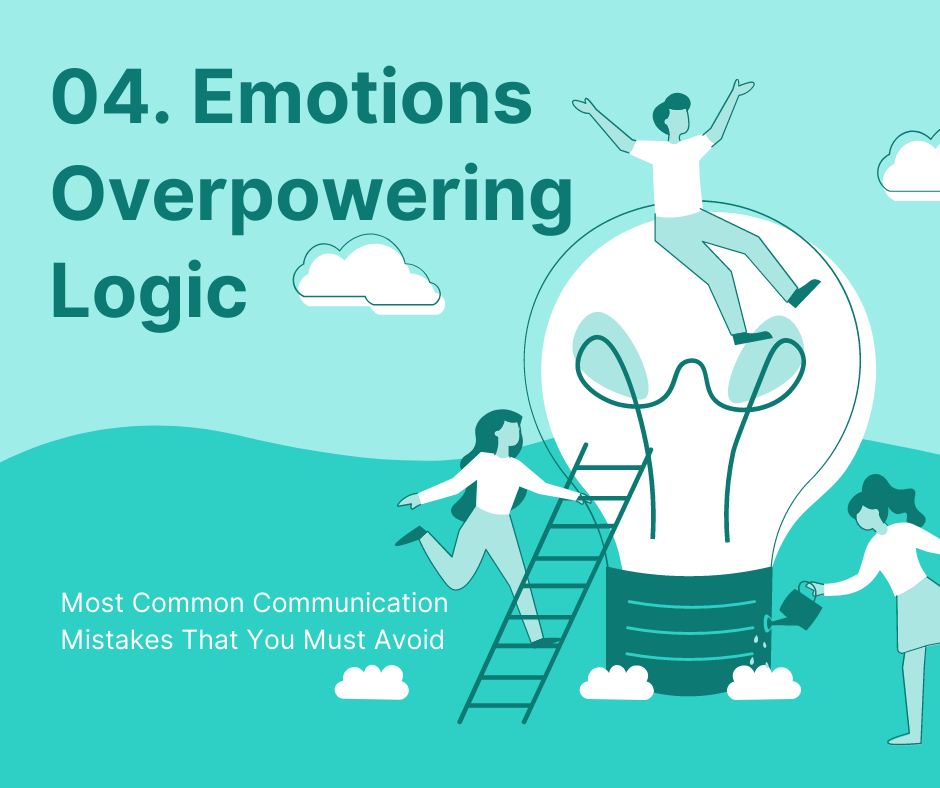
Conversations influenced by your emotions are ineffective and are likely to bring in undesired outcomes, especially in the office environment. You need to think and communicate logically while keeping your emotions aside. Most decisions that are guided by emotions are likely to be the ones that you regret later. It’s quite difficult but you need to resist your emotions from taking over your logical thinking.
5. Hold Back Your Thoughts and Ideas
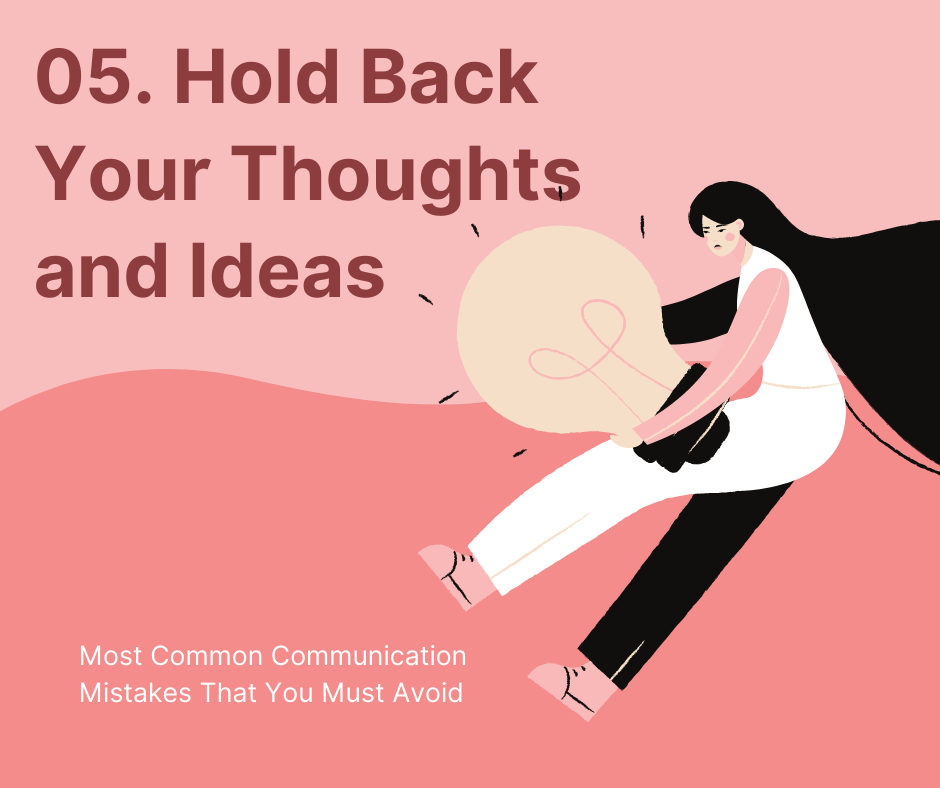
Not expressing your thoughts while communicating can bring conversations to a dead end. It’s very important to share what’s on your mind with others to get your issues and requests noticed. You need to communicate your opinions with confidence to make sure that others don’t take them too lightly.
6. Reacting More and Responding Less
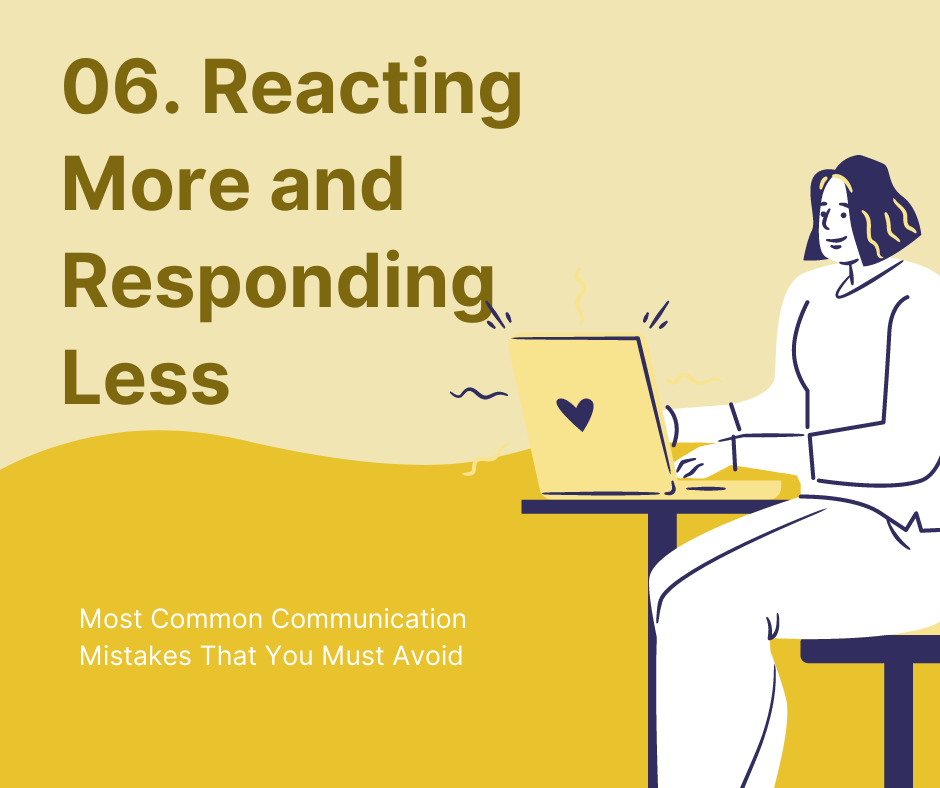
Reacting and responding are two different things. When you react, you take action without giving proper thought to the consequences and the impact that they are going to make. Generally, reactions are aggressive and tense in nature. On the other hand, responding means that you take time to think about the issue or the situation and then take action accordingly. Reactions are not good, especially when you are communicating with people on a professional level. A single reaction during a conversation can induce multiple reactions that will create a hateful environment and kill productivity.
7. Getting Distracted Easily

While exchanging information with others, you always need to pay attention to ensure that you don’t miss anything that is important. Distractions can put you in a situation where you are physically present in a conversation but mentally you become absent. There can be many reasons for getting distracted while communicating with your team like a bad attitude, the use of mobile phones, etc. For making any conversation successful, you need to keep distractions at bay and engage yourself with a positive attitude.
Stay connected with your team members as well as people from other teams in real-time with ProofHub. Sign up now for a free trial!
Wrapping it Up
Good communication skills are imperative for becoming successful in the workplace. Whether you are communicating with your team or with your boss, you should practice effective communication strategies to take your conversations to the next level. I also suggest that you should try to avoid common mistakes that affect the overall communication process and disrupt the flow of information.
Before you go, I want to share a quote with you that emphasizes the importance of communication:
“Communication – the human connection – is the key to personal and career success.” – Paul J. Meyer
Another effective way to communicate is by having a good communication tool that facilitates the process. ProofHub is an online project management software that provides a real-time platform to communicate with people en masse or one-on-one. Feel free to check out its features to make way for better workplace communication and productivity.
